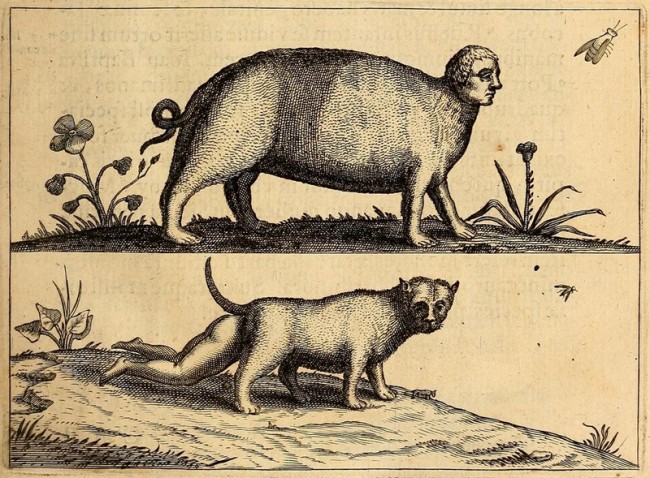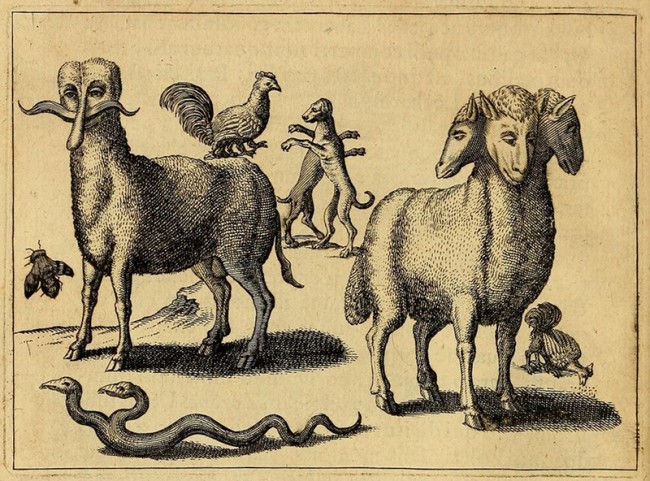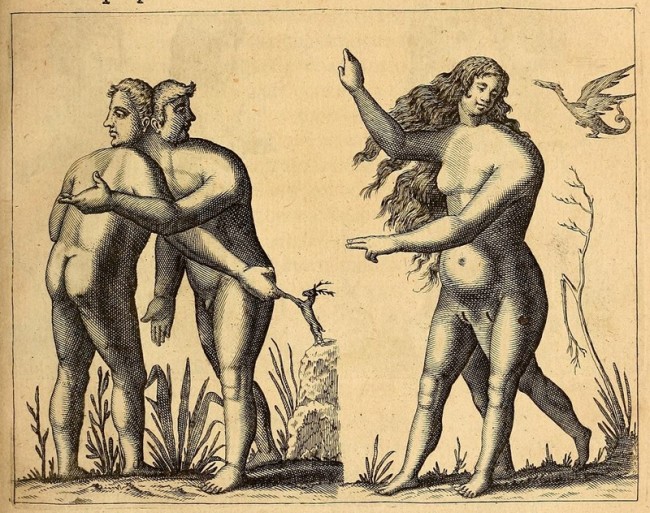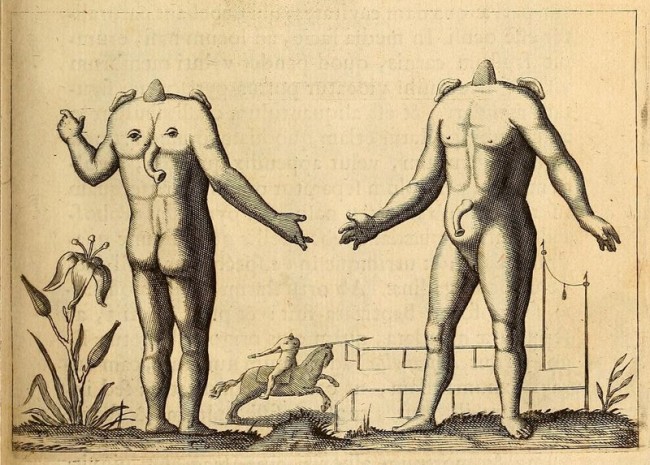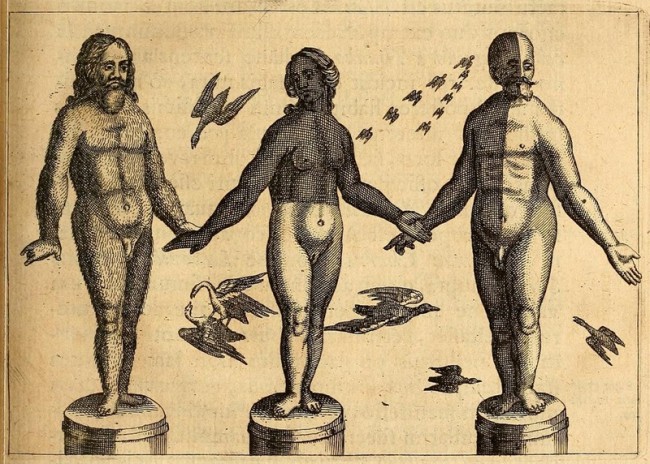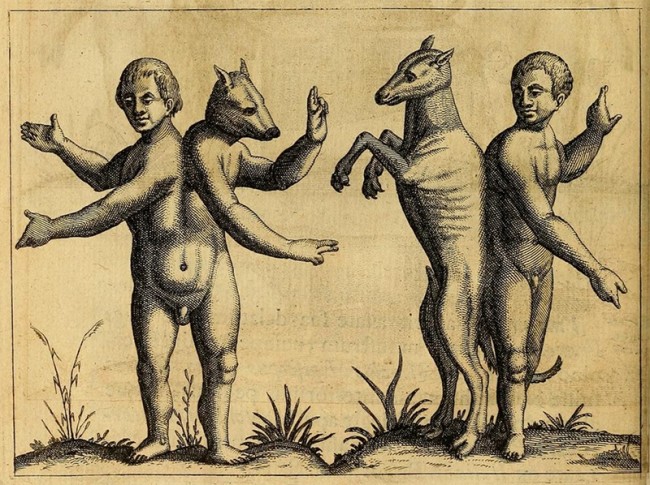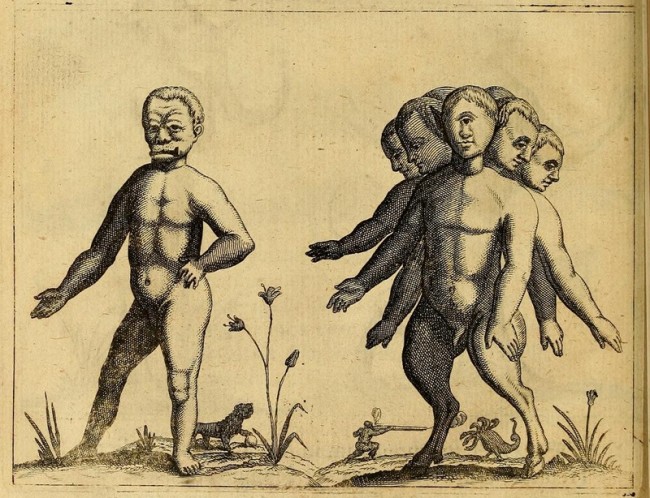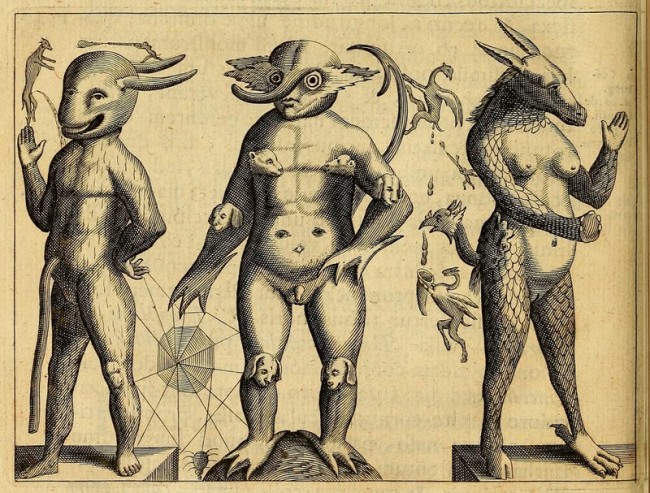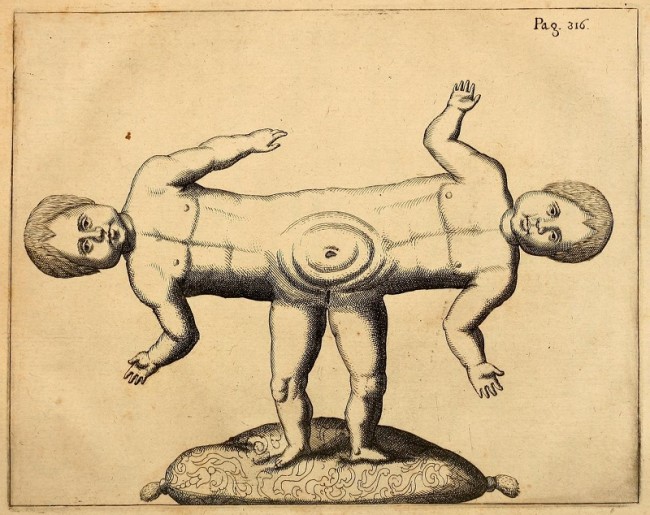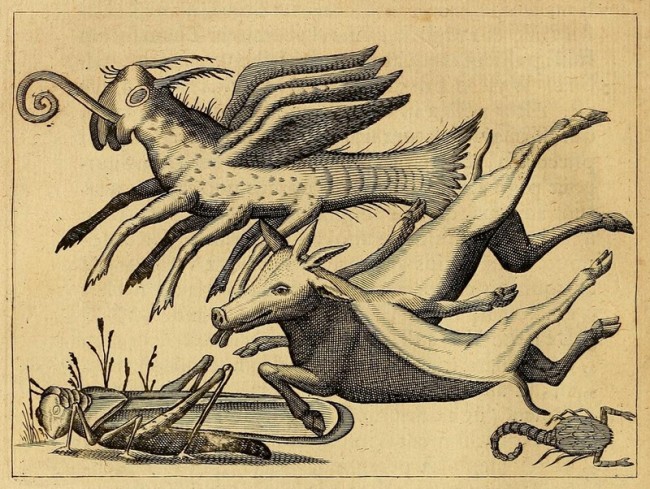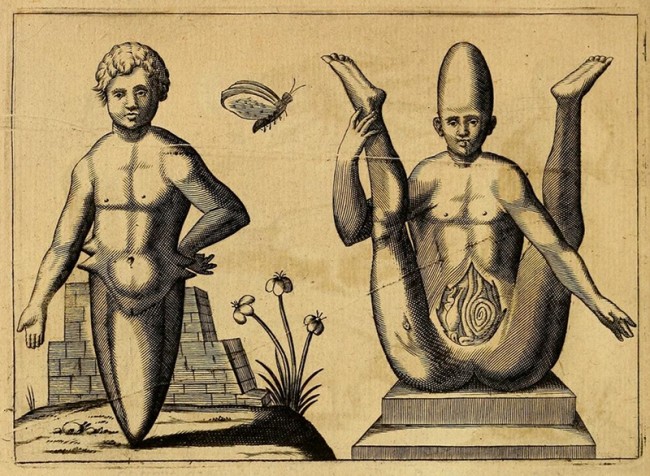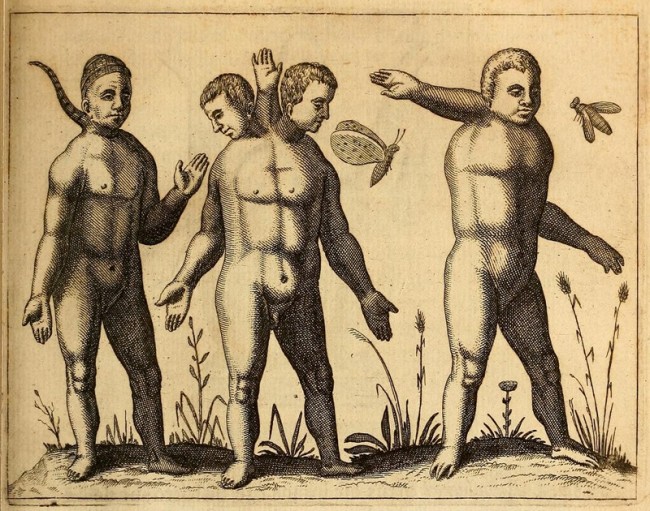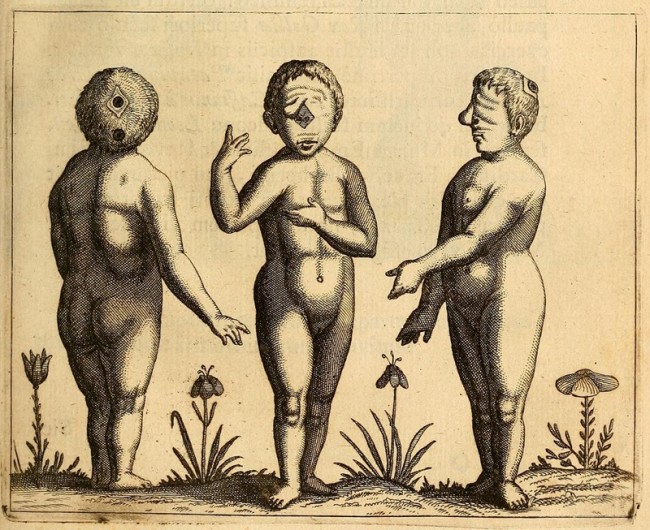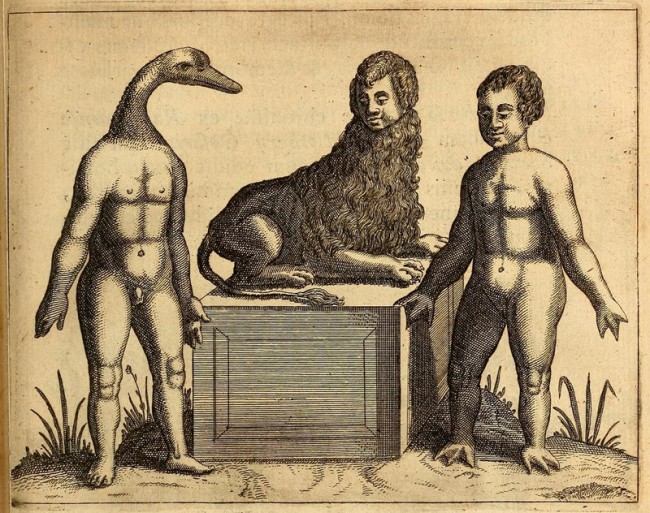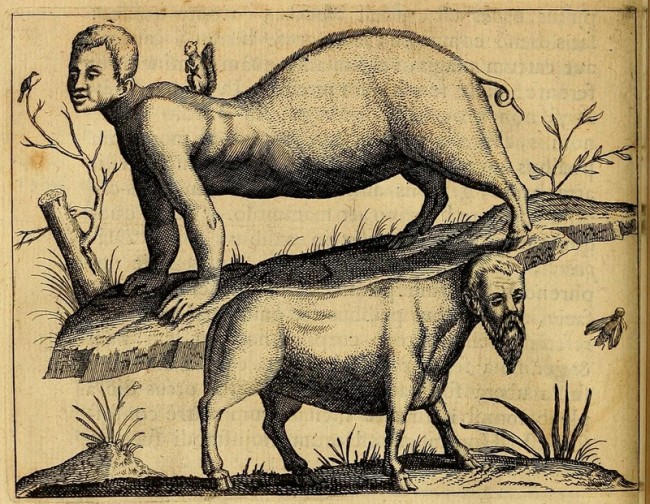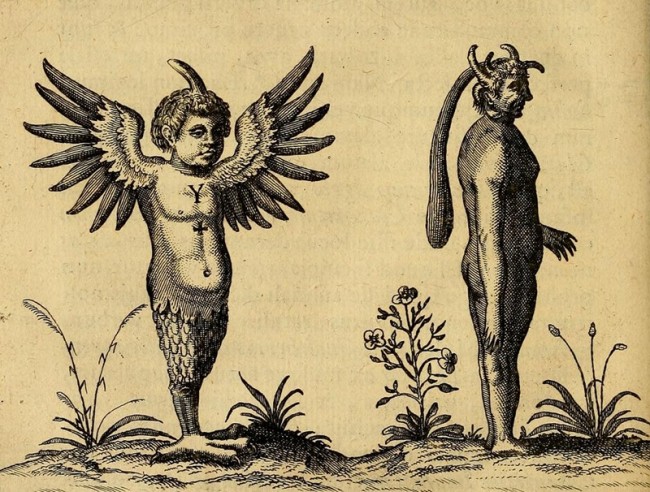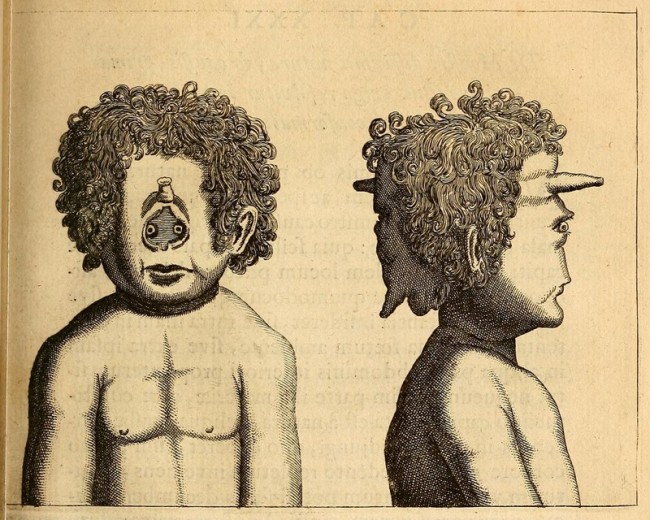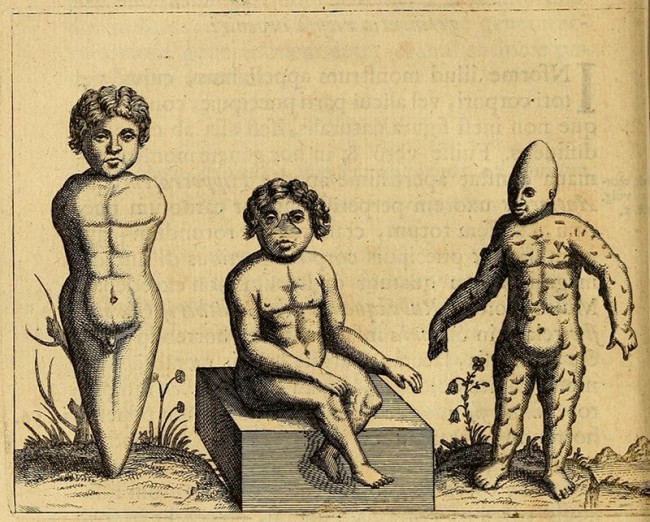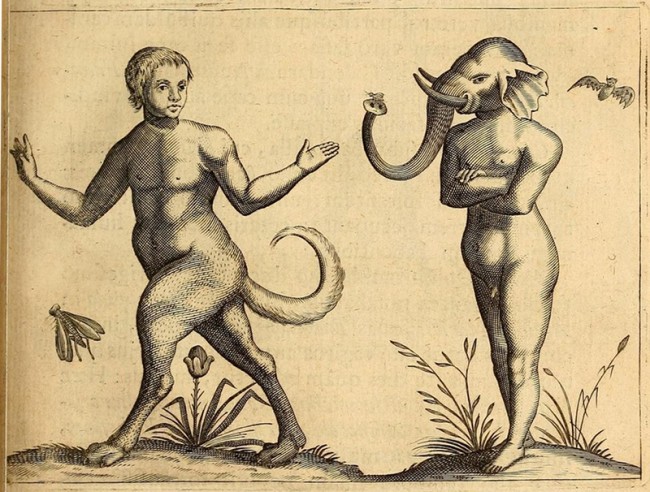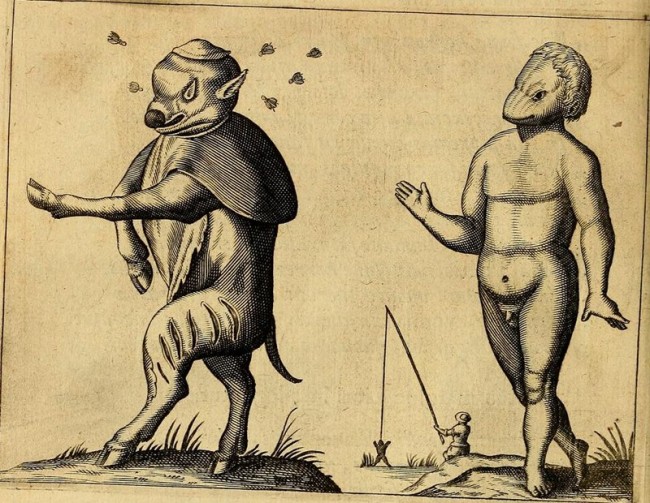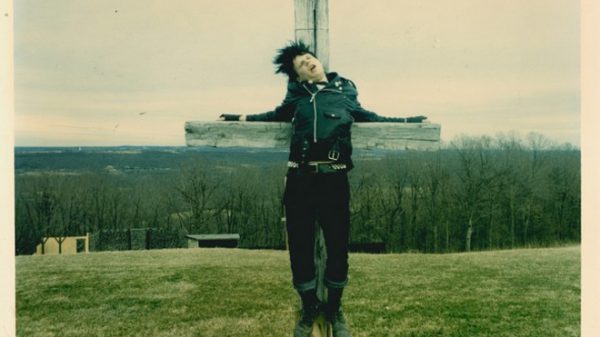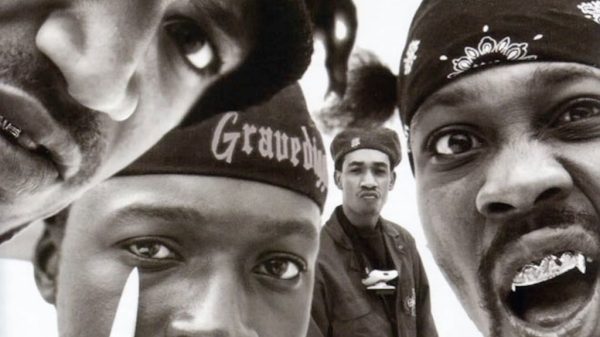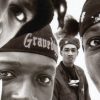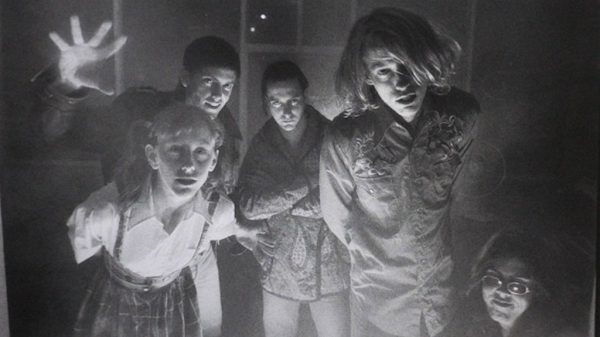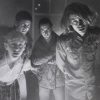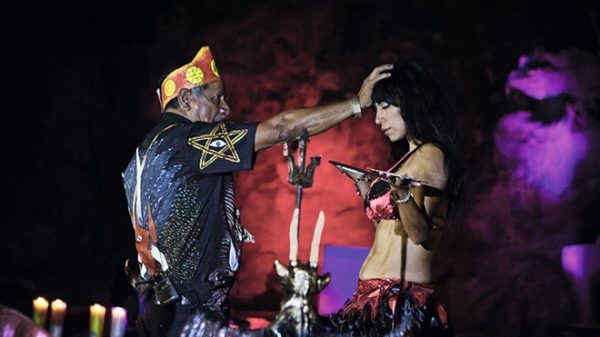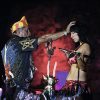Highlights from the illustrations in the 1665 edition of Fortunio Liceti’s De Monstris, originally published, without the illustrations, in 1616. Liceti’s work, although not the first on the topic of deformities in nature, was perhaps the most influential of the period. In the wake of the book there was a huge rise in interest throughout Europe in “monstrosities”: pygmies, supposed mermaids, deformed fetuses, and other natural marvels were put on display and widely discussed, becoming the circus freak-shows of their time. However, unlike many of his contemporaries Licenti did not see deformity as something negative, as the result of errors or failures in the course of nature. Instead he likened nature to an artist who, faced with some imperfection in the materials to be shaped, ingeniously creates another form still more admirable. ‘It is said that I see the convergence of both Nature and art,’ wrote Liceti, ‘because one or the other not being able to make what they want, they at least make what they can.”
Pictures & Text via The Public Domain Review


